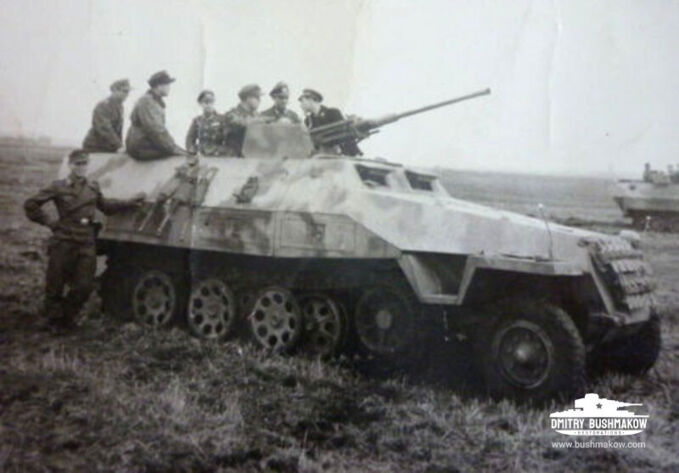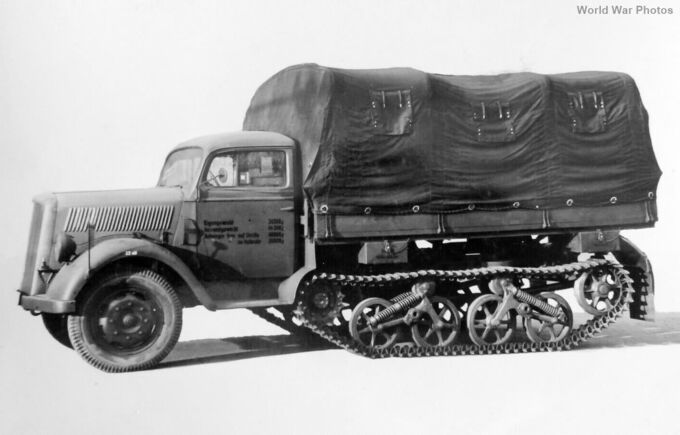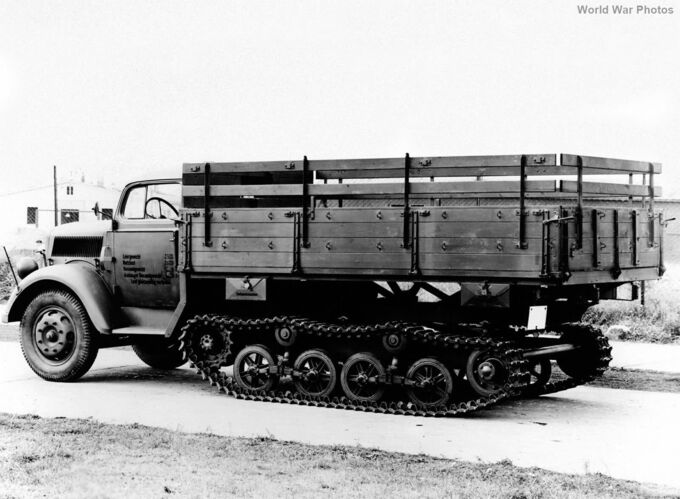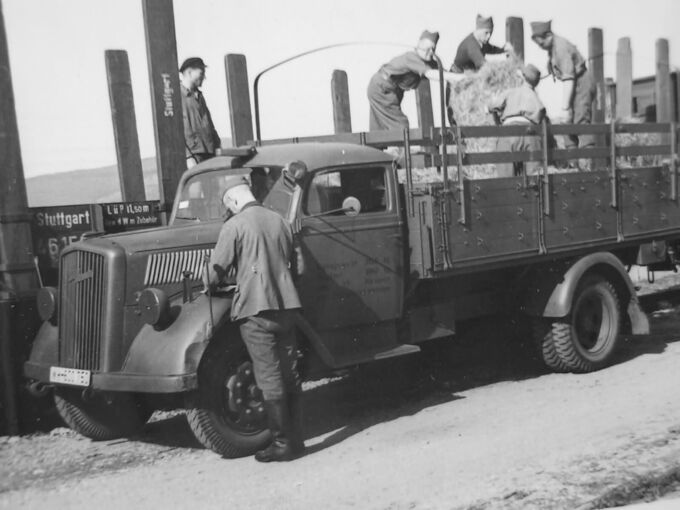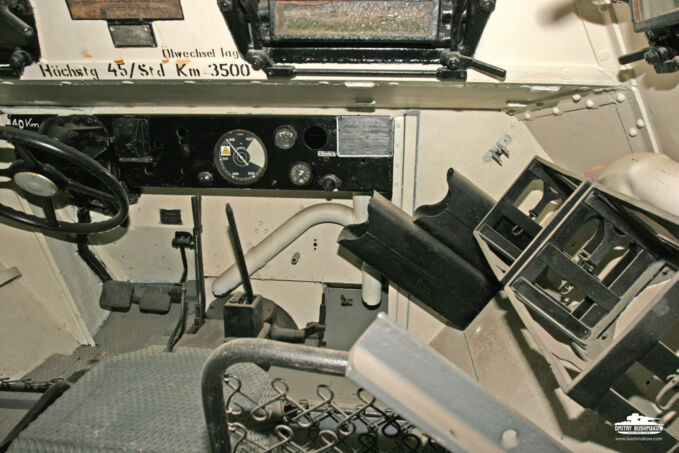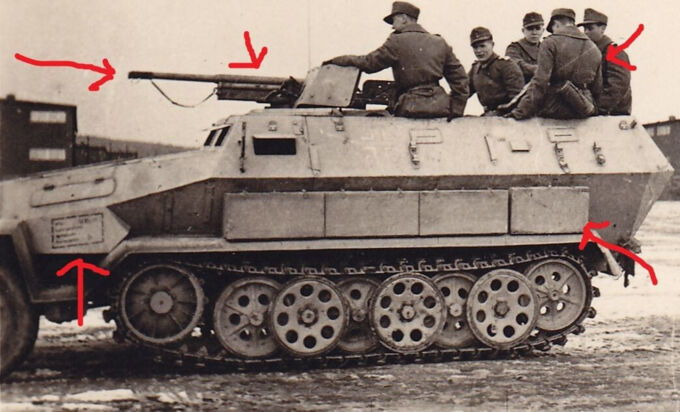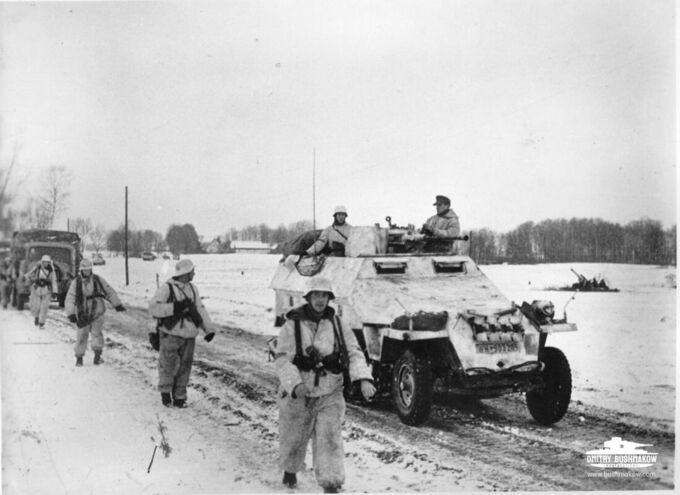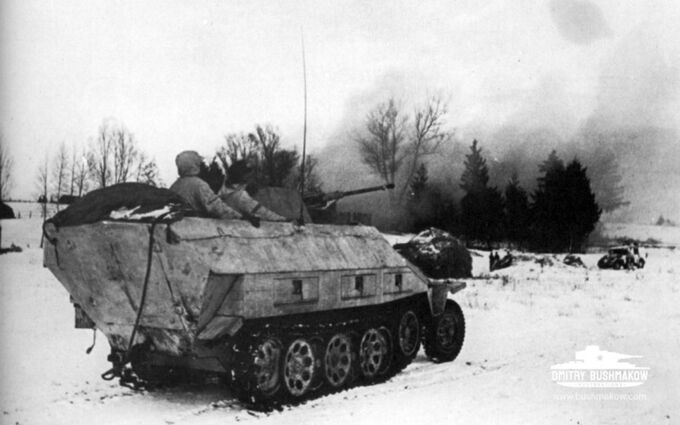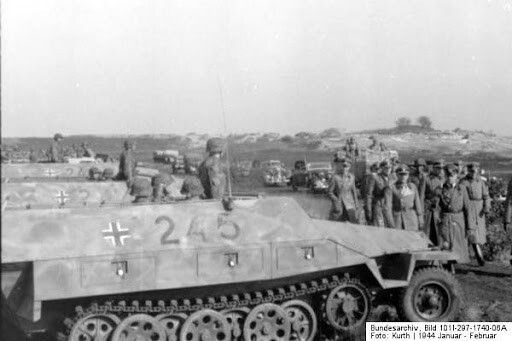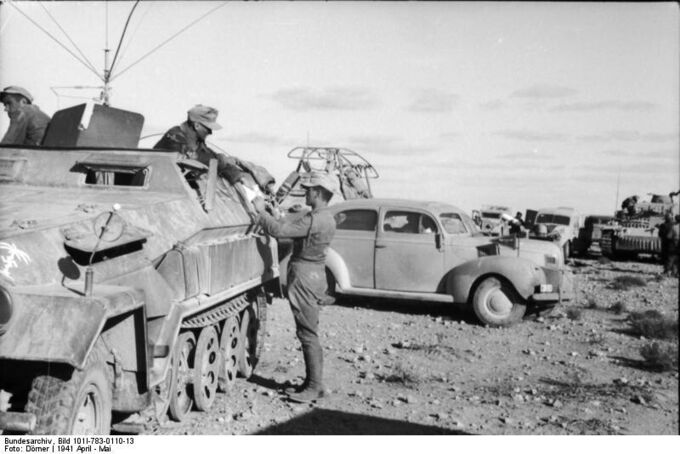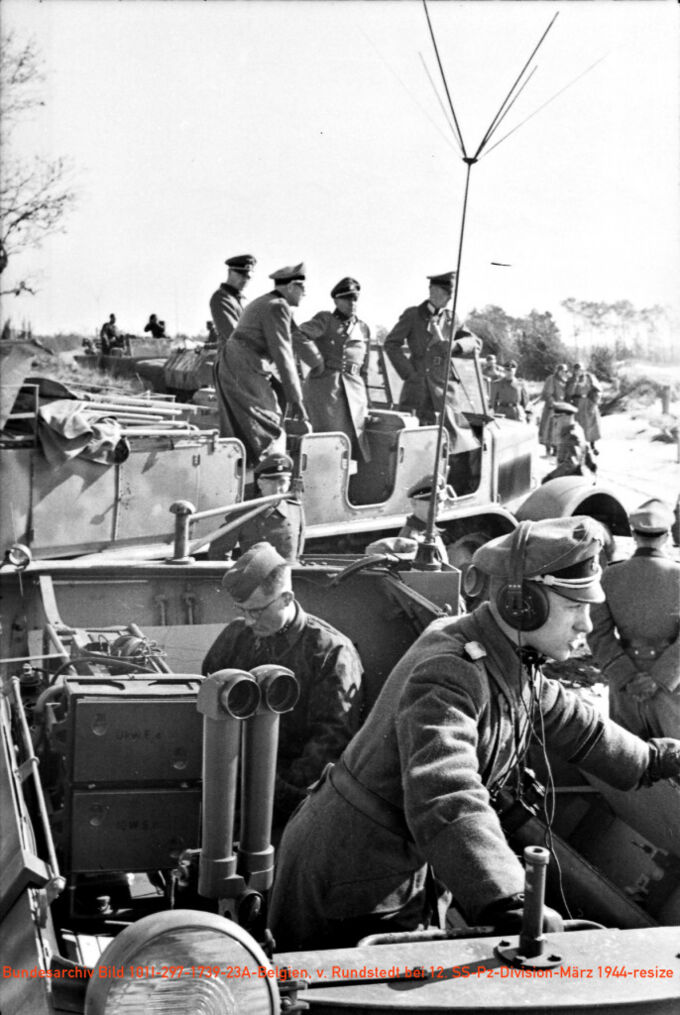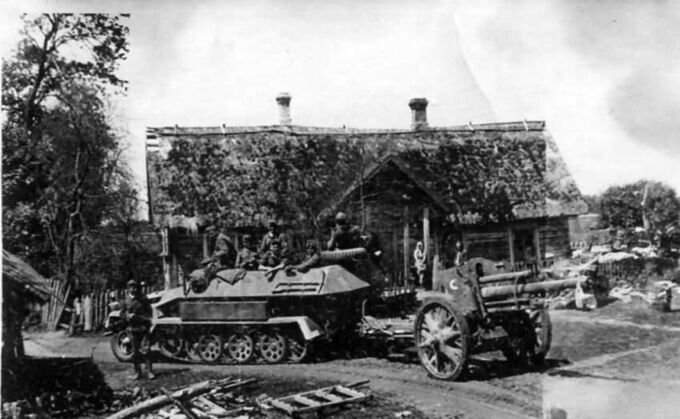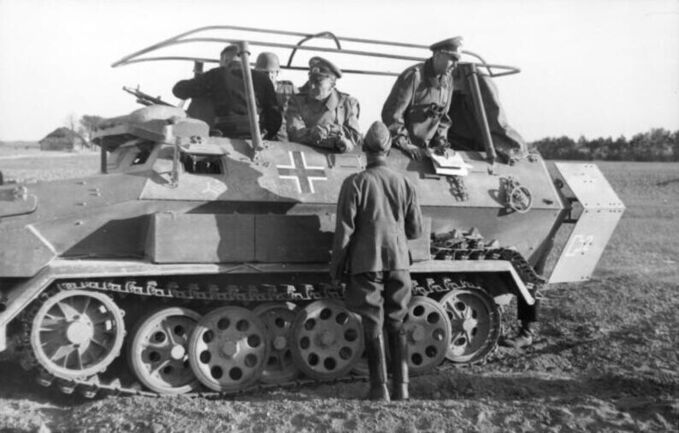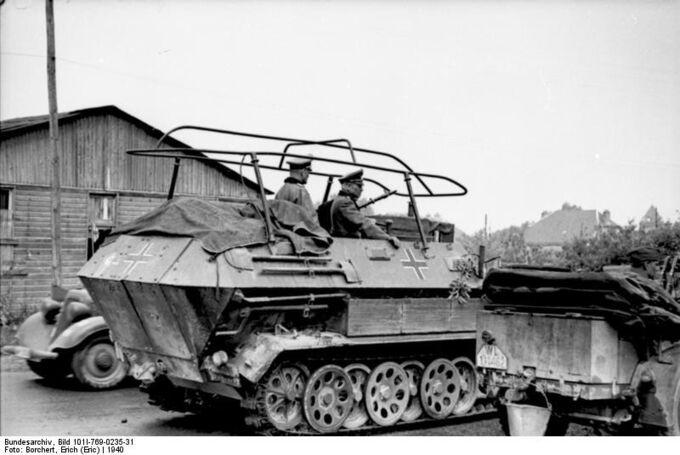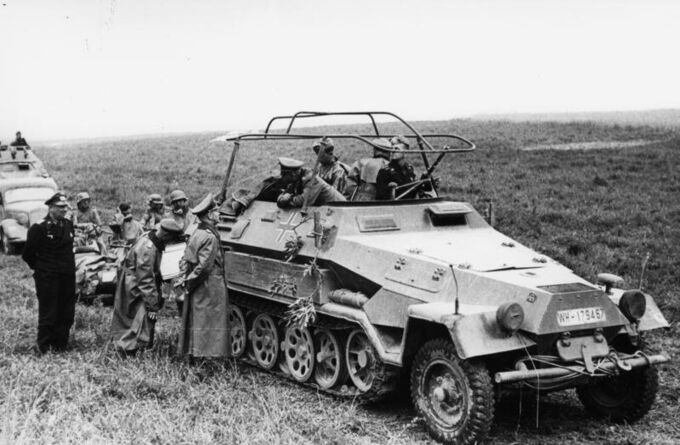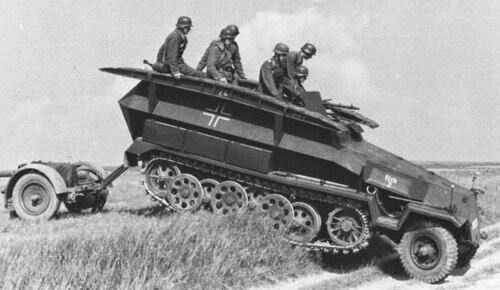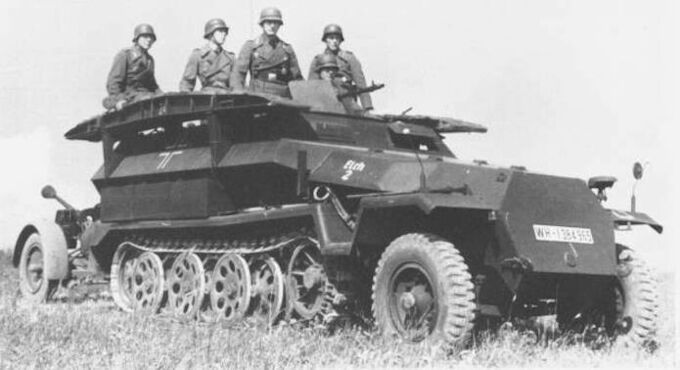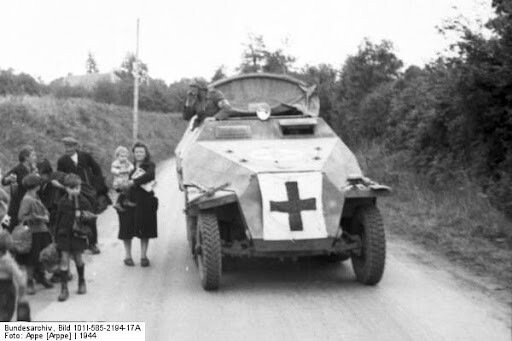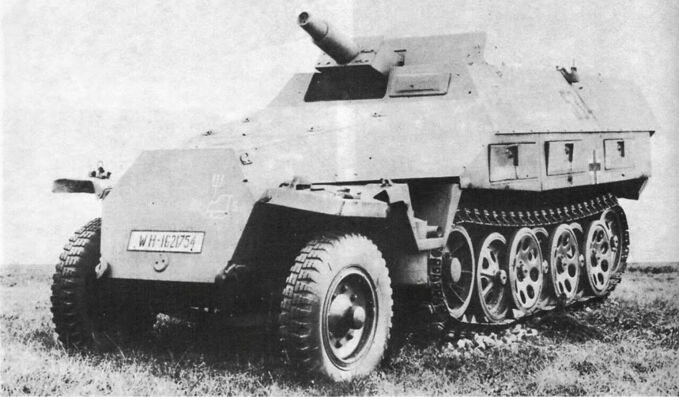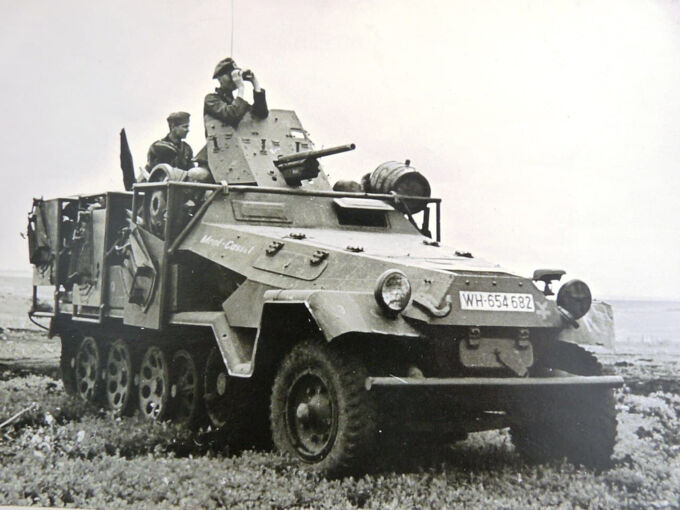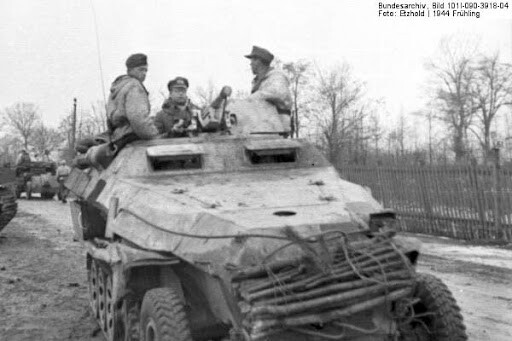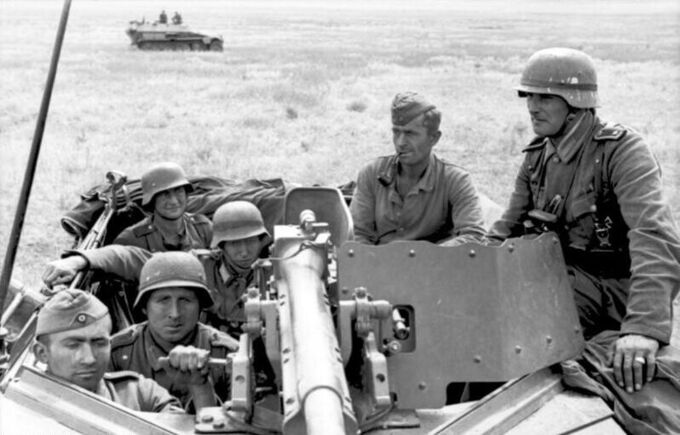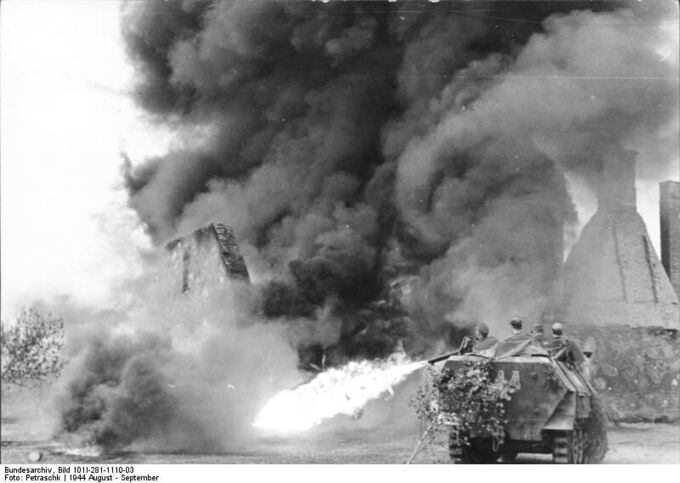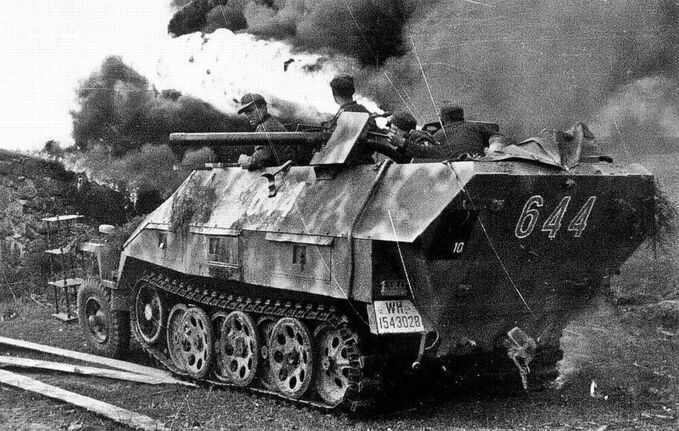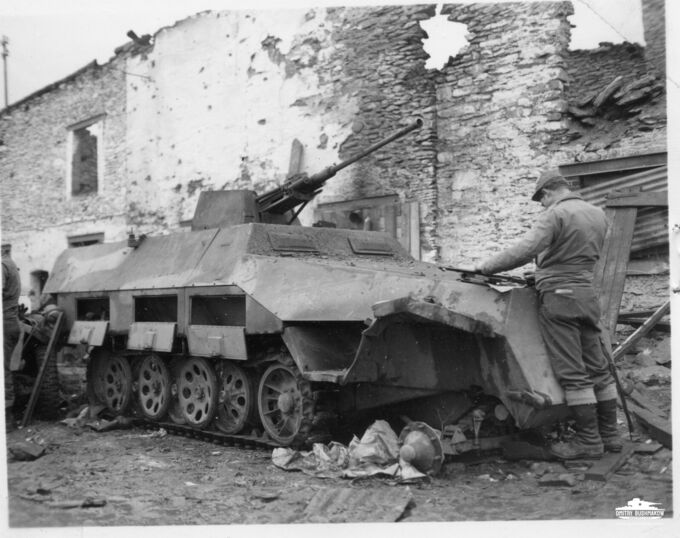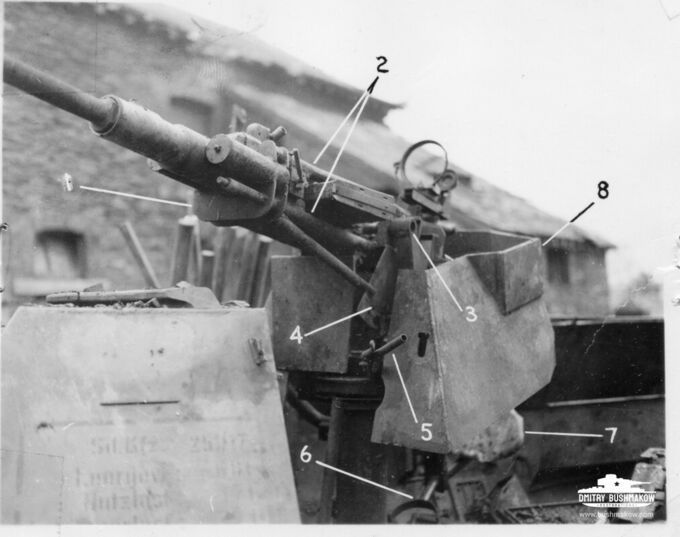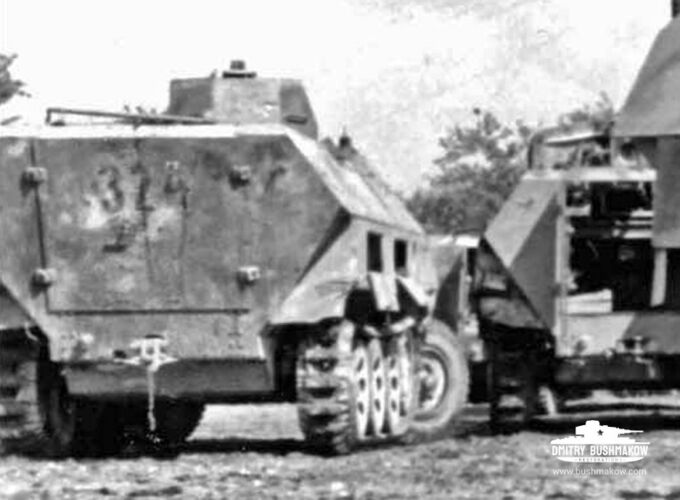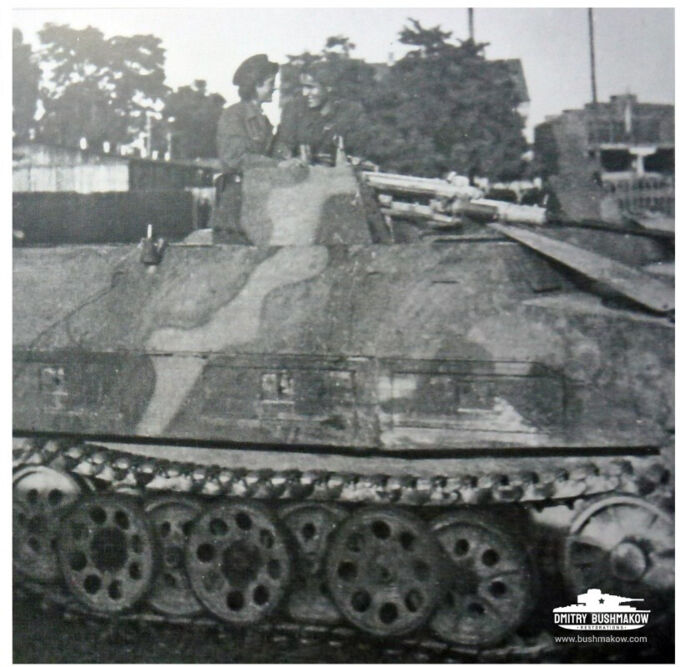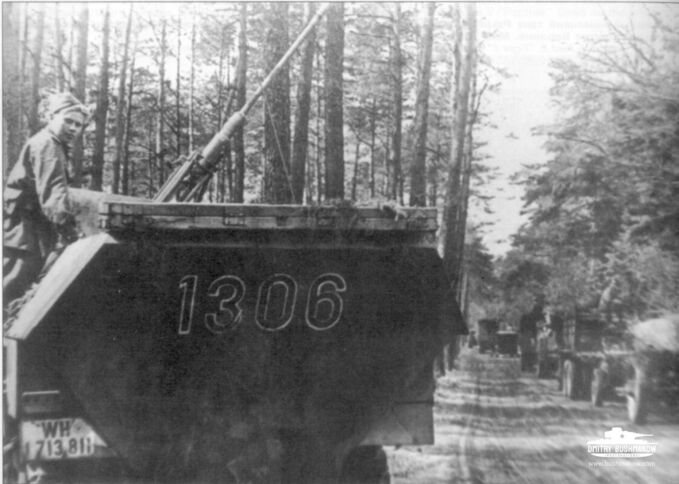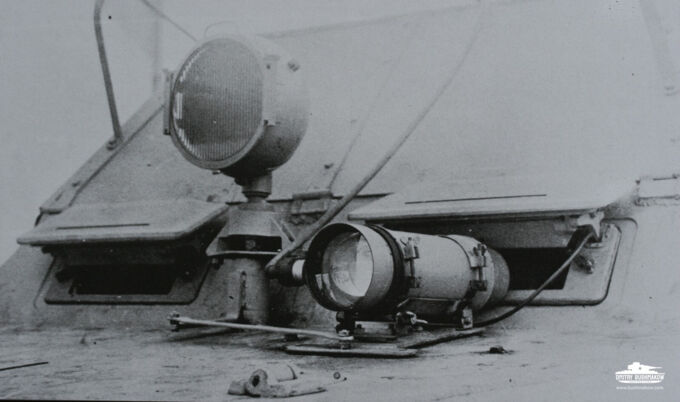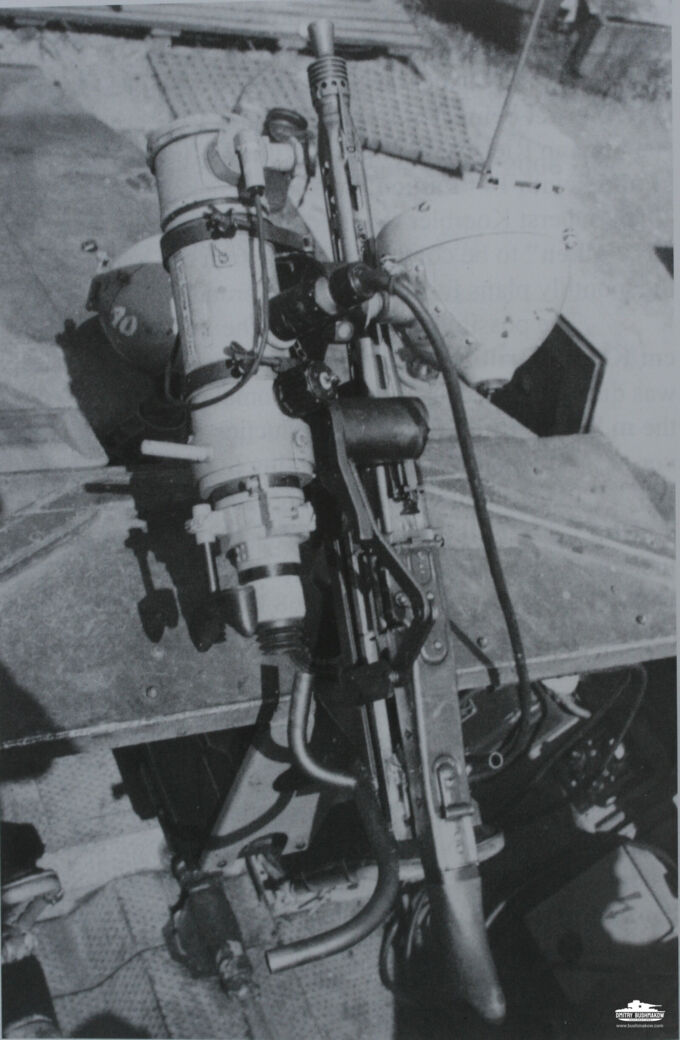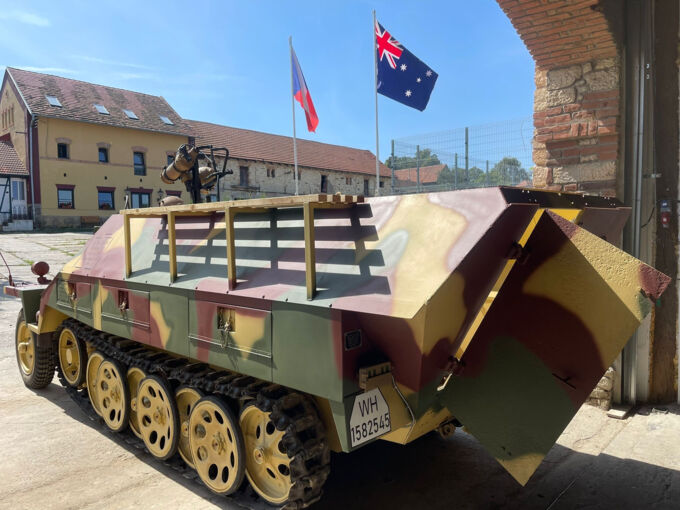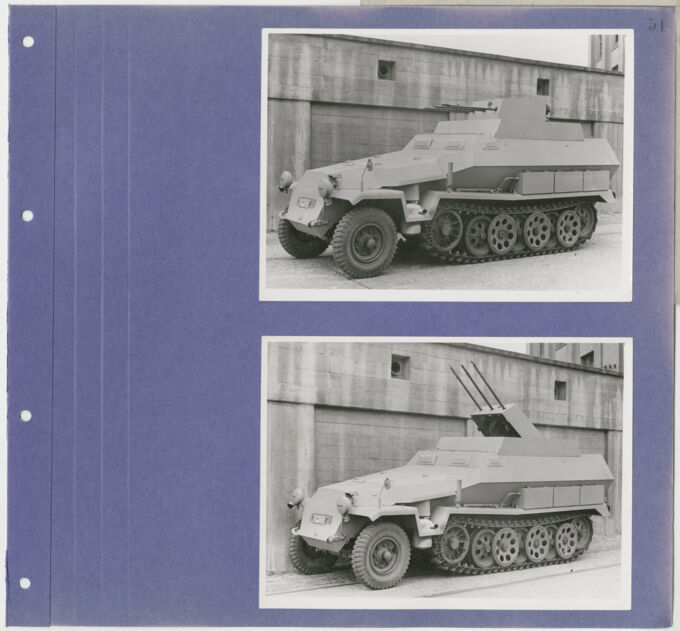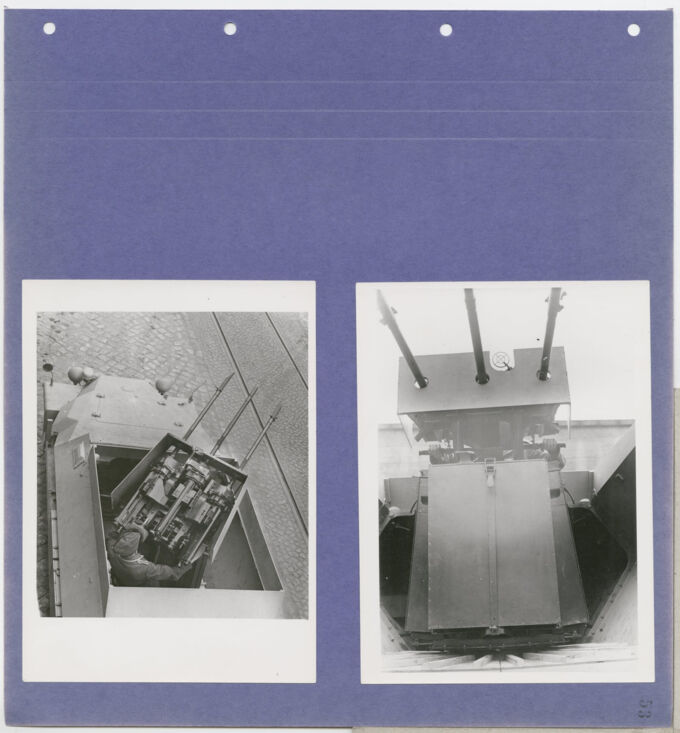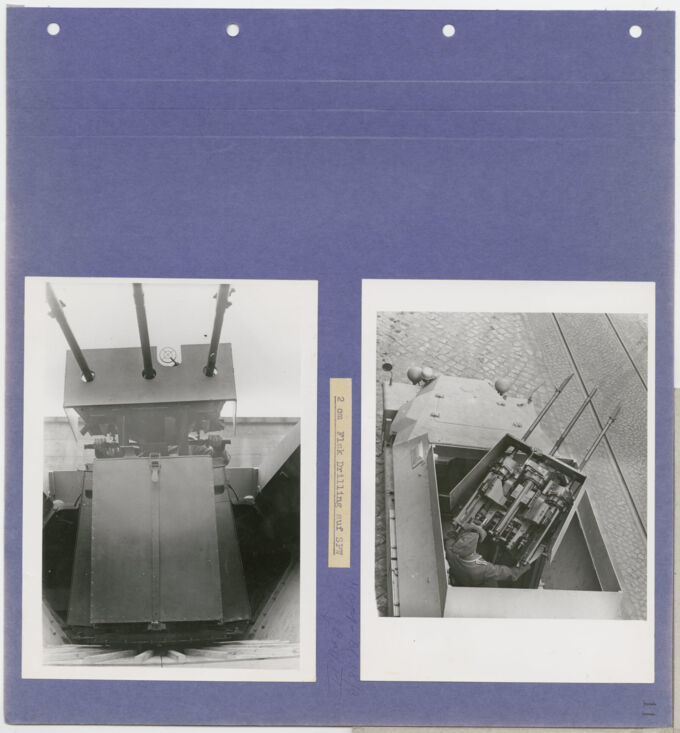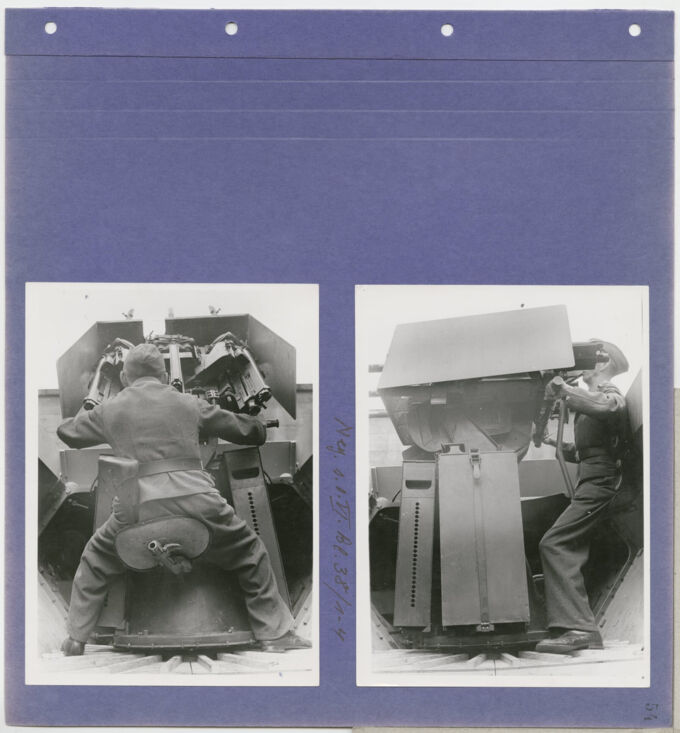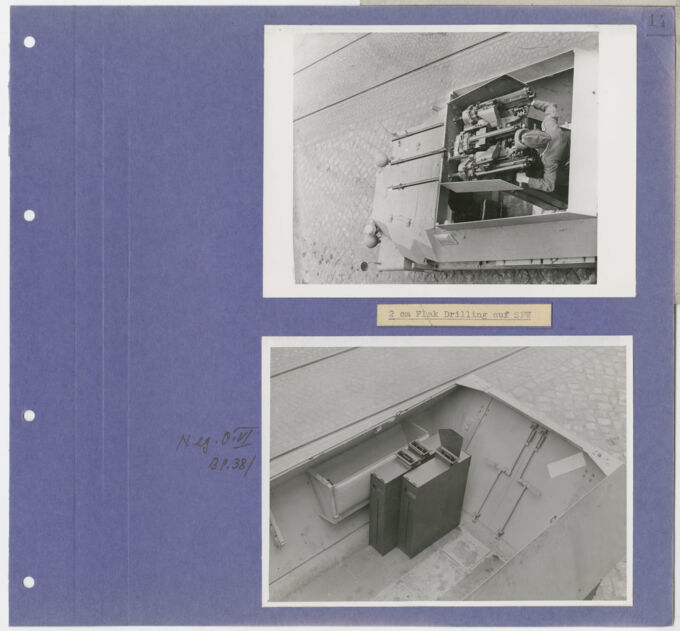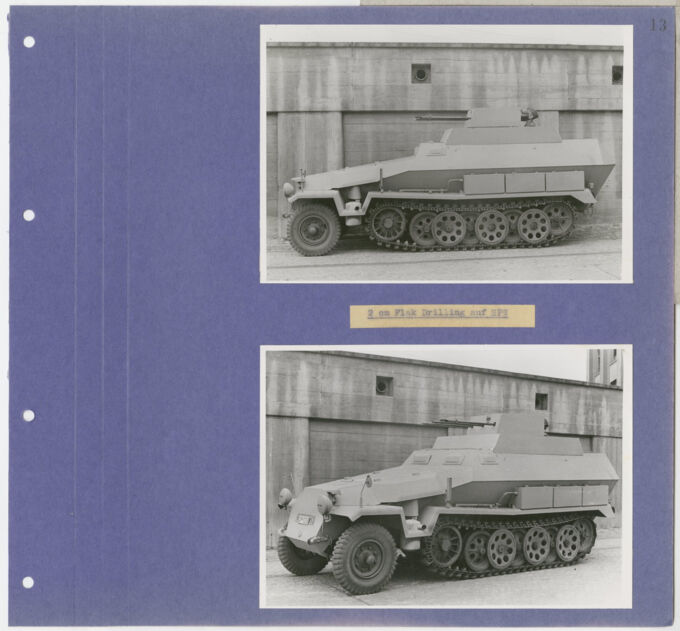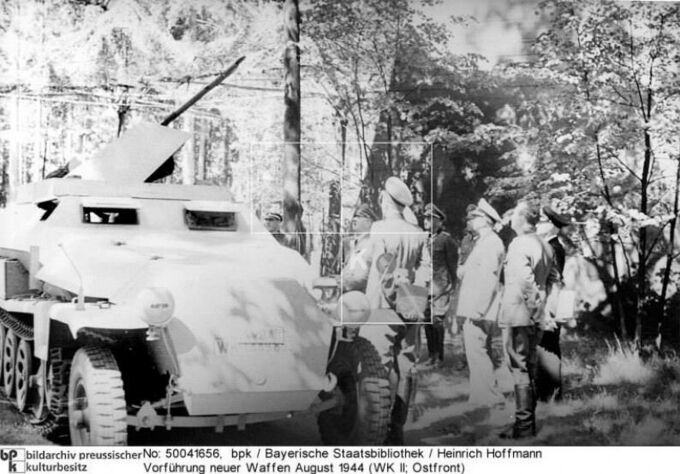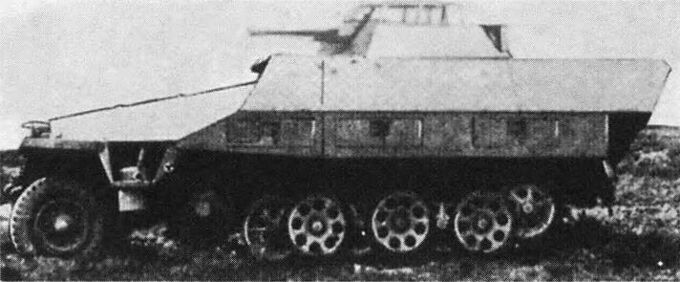A comprehensive overview of the Sd.Kfz.251 family, consisting of the base vehicle Ausf. A–D and equipment models/"numbers” and more, some of which can be found in game, is presented here, along with a general overview including details and history. There’s more to it than a quick look would show.
History
The Sd.Kfz.251, or Mittlerer Schützenpanzerwagen, was an adapted armored vehicle from the Sd.Kfz.11 half track. Designed to carry infantry and equipment alongside tanks and armed forces forward, it offered small-caliber protection and more. The early name was mittlerer gepanzerter Mannschaftstransportwagen, which was renamed to mittlerer Schützenpanzerwagen in 1942. A total of 15,570 vehicles were built, primarily by Hanomag, with about 225 by Borgward before the contract was taken over.
The Wa Prüf 6 (Waffen Prüfamt 6) required an armored vehicle to transport infantry and equipment into the field as well as to keep up with the advancing tanks, which were becoming ever faster. This was already written in the “Taschenbuch der Tanks” in 1927 by Fritz Heigls. However, he disliked half tracks and preferred fully tracked vehicles, which would come into development much later in the war, in the form of BMM “Kätzchen” and other developmental models.
The Wa Prüf 6 however chose a half-tracked vehicle for development in 1934 as at the time vehicle development was still relatively new and there were still advantages to half tracks.
Compared to normal trucks, German half tracks had only a minor increase in rolling resistance of 5–10% because of their light and wet track design. The ¾th track length offered great off-road performance and grip even without powered front wheels. Other nations’ designs often had powered front wheels but also with a shorter track length as compensation. Conversion of trucks to half tracks was also relatively simple; an example would be the Gleisketten LKW Maultier. These often lacked speed in favor of higher gearing for more strength.
Generally, while a half track has good off-road performance compared to a truck, it still lags behind fully tracked vehicles. The main advantage they offered was the simplicity of construction of the transmission. While a fully tracked vehicle needs a sophisticated clutch transmission or better to effectively turn at different speeds, a half track mainly turned simply by the front wheels and for even greater turns locked the inner track. The advantages for a fully tracked vehicle are also simple: greatest off-road ability, maximum grip, and best distribution of ground pressure. And unlike half tracks, there isn’t a wheel in the front that can potentially bump into things or get stuck.
With the known advantages and disadvantages, the Wa Prüf 6 had chosen the half track as it was sufficient, and Germany simply didn’t have the industrial capacity to effectively develop a fully tracked vehicle and put it into production. The companies Borgward and Hanomag were contacted. In 1934, Borgward started development of a series of vehicles, with the main focus model being the HL Kl 5 and further the HL Kl 6; this was then also taken over by Hanomag. The main differences were a Maybach NL 38 engine instead of a Borgward engine. The HL Kl 6 would continue to become the Sd.Kfz.11, while there was a second model, the HL Kl 6p, which had minor differences for adaptation of the armored body, becoming the Sd.Kfz.251.
The work on the HK Kl 6 started in October 1936, which was practically already in a finished state and would as such go into production as the wartime model, but with a more powerful Maybach HL 42 engine, shock absorbers only on the last two pairs of road wheels, and some minor other changes.
As mentioned above, the HL Kl 6 (Sd.Kfz.11) and HL Kl 6p (Sd.Kfz.251), which had some adaptation differences such as two ventilators for cooling instead of one, and the steering wheel turned downwards with gearing.
Additionally, since the base vehicle was heavier, the road brakes were activated by compressed air, with cables of mechanical self-servo brakes instead of rods and levers.
First prototype vehicles by both Hanomag and Borgward separately had test runs in 1937, with Borgward’s prototype being finished and tested earlier.
Base models
As mentioned above there are base vehicle series, Ausf. A, B, C and D as well as a small series of unarmored soft steel vehicles from the prewar period. Additionally while all are of welded construction, some exist with riveted construction.
Ausf. A
The first main series of the 251, with development starting in 1937. The pilot series was ordered in 1938 and production vehicles began reaching units in 1939. In 1939, 232 were built (June 1939 — December 1939).
It had a two-piece front plate in front of the engine with a service (and additional cooling) hatch in the lower plate. The Einheitssehklappe (standard vision port) was used from the beginning: two large ones in the front for the driver and co-driver, two small ones on the sides for the driver and co-driver, as well as two per side in the transport compartment. These four vision slits at the back are the main identification for an Ausf. A. The front 14.5mm armor offered immunity to 7.92mm S.m.K. ammo and similar, over range against 12.7mm AP ammo, with all other plates of 8mm thickness and a native angle of at least 30° offering protection against S.m.K. ammo from 30m range. Frontal armament consisted of an MG 34 in either an GP/AA/AI mount or a Schwere MG Lafette; sometimes also a second MG 34 at the back in the GP/AA/AI mount. Per side are three storage boxes fixed to the hull on the fenders, placed in the middle relative to the vehicle.
Ausf. A Ungepanzert (unarmored)
In 1939, with the start of full production of the vehicle, there was a shortage of hardened armor plates in the required thicknesses; as such, these were a limited production of 305 vehicles made from unhardened steel, supplied by Borgward with Fgst.Nr. 320196–320285 and Fgst.Nr. 320418–320716. Production lasted until the end of 1939 (June 1939 — December 1939).
They were called mittlerer ungepanzerter Mannschaftstransportwagen Sd.Kfz.251, or Ausf. A ungepanzert for short. At that time only Ausf. A existed and only unarmored Ausf. A were build.
These offered protection for the crew against shrapnel and lead ball ammo but not AP rifle ammo. They looked identical to the Ausf. A, with the differences being that they used simple flat plates with vision slits instead of the Einheitssehklappe and less usage of bolts in secondary construction (primary it was welded). The plate in front of the engine was simply one with a bend in the middle instead of two welded together. The MG with shield at the front of the /1 is also replaced by a simple GP AA/AI pintle.
Overall, most were /1; however, there are photos of others that were later in the war retrofitted with other equipment such as a 3.7 cm Pak.
From 1939 to 1941, they were primarily used for wounded transportation, training, and pulling guns/ammo/equipment until again they were later in the war also used in frontline usage simply due to need for more vehicles.
Ausf. B
The Ausf. B started production in early 1940; it was identical to the Ausf. A with the exception that the four vision slits in the back compartment were removed. 347 vehicles were produced until January 1941.
Ausf. C
While overall similar to the Ausf. B, the C received two big ears next to the engine for increased airflow and a new single-piece frontal plate. The cooling grill on top of the engine deck was removed, as was the side and front inspection hatches. The storage boxes were moved further to the back. Some Ausf. C were produced in Czechia; however, they didn’t have the equipment nor workers for welding, so some vehicles were constructed with bolts instead of welding.
1,624 were produced from January 1941 until August 1943.
Ausf.D
The Ausf. D was the final evolution; while the C was the design step in between with reworked airflow, the Ausf. D had a new simplified engine compartment armor, wider and with less plates. The ears didn’t go away; they were integrated. The three storage boxes were replaced by a bigger three-hatch armored storage compartment along the full side, giving it a more flush design and additional protection for the crew and stored items. The pointy backside was replaced by a more simple outward angled design. The Einheitssehklappen to the left and right were replaced by simple slits with armored glass blocks.
Production from July 1943 to 1945 with 4,258 / 7,785 / 1,016 (including C).
Equipment models
There were 22 official models on top of the base vehicles that went into production, as well as a planned 23rd model, that would have been a 250/9 but on 251 basis.
251/1: Standard variant with 2–3 MG 34 or MG 42 either in the GP/AA/AI mount, simple mount with shield, or in the heavy mount. Carrying infantry.
251/2: Specialized vehicle with 8 cm Granatwerfer 34 and 80 rounds.
251/3: Radio vehicle with four models named with an additional Roman numeral I to IV. The I has a FuG8 and FuG4, II FuG8, FuG5, and FuG4, III FuG7, FuG1, and Fu.Spr.Ger f (for ground-to-air coordination), and IV with FuG11 and FuG12 with additional 9m telescopic antenna mast Sonderantenne II.
251/4: Initially for ammo and additional parts and equipment for the 7.5 cm Le.I.G.18 L/12, later more generalized to carry ammo and equipment for a wide array of different light and heavy infantry guns.
251/5: Specialized vehicle for pioneer train, additional storage room instead of a 2nd bench.
251/6: Medium command vehicle with FUG12 (80 Watt) and FuG19 (15 Watt) and Rahmenantenne (loop antenna).
251/7: Another pioneer vehicle, identical to /5 but with a Behelfsbrücke (5.5m 14 ton) bridge.
251/8: Kranken/Sanitätswagen (first aid vehicle) with 4 stretchers on Ausf. C and D.
251/9: Kanonenpanzerwagen armed with the 7.5 cm KwK 37 L/24, K.37 or K.51, on Ausf. C and D and up to two MG 34 or MG 42. Early variants had the gun integrated in the front plate; later production used a universal lafett with coax MG 42.
251/10: Kanonenpanzerwagen armed with 3.7 cm Pak L/45, on Ausf. A–D. A and B with either standard gun mount and shield, C with either normal or lower vehicle mount, and D only with lower double plate vehicle mount.
251/11: Telephone vehicle to lay telephone wire.
251/12: Messtrupp and Gerätepanzerwagen (Measuring crew and equipment).
251/13: Sound recording vehicle.
251/14: Sound recording evaluation vehicle.
251/15: Light evaluation vehicle. /12 to /15 were small series artillery support vehicles.
251/16: Flamethrower vehicle with two 1.4 cm Flammwerfer 42, series production on Ausf. D.
251/17: Two main series; the Ausf. C was with modified side plates that could fold away, with a 2 cm Flak 38 L/65 in the normal Flaklafette 38, the later production on Ausf. D were standard vehicles with 2 cm Flak 38 L/65 in Schwebelafette 38.
251/18: Beobachtungspanzerwagen, Observation vehicle with FuG12 radio.
251/19: Fernsprechpanzerwagen (telephone vehicle).
251/20: “Uhu” night equipment with IR 60 cm Infrarotscheinwerfer with 3 km range and 1.2 km effective range. For general field reconnaissance or as main light for vehicles with IR night vision sights such as other Sd.Kfz.251 or Panthers, which own 30 cm IR headlights only had a range of 400m and effective 150m, while the gun range is 2.5 km.
251/21: Anti-infantry, light vehicles, and close air protection with MG 151 Drilling.
251/22: AT Vehicle with 7.5 cm Pak 40 L/46, only Ausf. D.
251/23: Planned variant to replace the 250/9, which production was planned to be stopped late 1944; however, the 250 production wasn’t stopped; the /23 was never produced.
Extra equipment was possible, usually on /1 but other models also received them. This consisted primarily in the form of field mods if other vehicles got damaged or destroyed or there simply weren’t enough other vehicles, then extra equipment was simply mounted on what was available. Such as up to six Wurfrahmen 40 with 28-32 cm HE or Incendiary rockets. While usual with the /1, other models are also seen with them such as on /10. On some /7 the front MG was replaced by a 2.8 cm S.Pz.B.41 and rarely also a 3.7 cm Pak L/45; these can also be seen on a bunch of photos on the internet. A few Enigma machines were also mounted on 251/3 vehicles.
There were also a number of field mods; most likely there existed way more, but either not photographed or simply lost. Most unique field mods were made out of pure need and expanding the available mobilized armament and thoughts of improving the already available.
One such vehicle was armed with a 2,5 cm Flak Hotchkiss (f), used by the 12th SS Panzerdivision. While nothing more is known about it, it’s a rather simple modification; the frontal MG was removed and the gun mounted into the infantry compartment. Many guns including the 2.5 cm Flak Hotchkiss Model 1939 and 1940 were captured in somewhat great numbers after the France campaign. These guns were seen as adequate, with good performance (for the time). Usable both in the anti-tank role, being equipped with 260g AP-T rounds and 240g HE-T rounds with 10g TnT filler against both ground and air targets. The main advantage of the HE-T rounds beyond the own 20mm rounds were only greater shrapnel mass as even the basic 2 cm Sprgr. L’Spur of 120g (prewar model 115g) had 6.2 g Pent, with an equivalent of 10.54g, while there were also more models with even bigger and stronger fillers. It was similar in overall design to the 2 cm Flaks, being fed by a 15-round magazine, which wasn’t the most ideal as compared to the smaller 2 cm Magazin 30 it was rather bulky and heavy. The guns were due their weight and limited supply lines often used on the French coastal line, with this modified vehicle being a rare sight.
Another example was armed with two 12 cm Granatwerfer 42; this vehicle was modified by Germans in Yugoslavia where it operated 1944/1945 before being captured by said nation.
A trial vehicle “Sd.Kfz.251 Ausf.B Teilgepanzert with 7.5 cm Pak 42 L/70. This was a makeshift prototype to the 7.5 cm Pak L/70 in le.F.H. 43 (kp) Oberlafette auf 3 ton Zugmaschine (RH 8/v 311 Folie 3). A planned general-purpose vehicle, together with a 10.5 cm LeFH armed vehicle to extend the base vehicle to the new roles of infantry support and mobile anti-tank gun on an already in production chassis. While neither went into further development nor production, they both showed somewhat good results but were overtaken by the fully tracked Waffenträger vehicles which were universal chassis that could tow or carry guns and ammunition.
One vehicle was armed with a 5 cm Pak 38 L/60, this was used in the North African desert where transportation and travelling was often long, and a carried gun was preferable to a towed gun already alone from the perspective of wear of the road wheels (of the mount) and fuel consumption; the gun without major parts and wheels was generally lighter when directly mounted on the vehicle.
One or two Sd.Kfz.251/17 were armed with an HDL 151 with MG 151. These were the standard aircraft and ship gun turrets armed with either a 15 or 20mm MG 151. Most likely taken from a destroyed aircraft, these Sd.Kfz.251s received a great armament upgrade against ground and air targets alike. It was an 15 mm MG 151 in the hydraulically driven mounting combining fast reaction time with good velocity and fire rate. The gun could shred light vehicles, structures, and infantry as well as defend against low-flying aircraft.
A trial vehicle was armed with a 2 cm C/38 L/65. Usually, the vehicles with the armament had some modifications to them or generally a more complicated/sophisticated mounting; this trial vehicle put a gun directly on the front roof part in a most simple mounting without any protection similarly to the M2 Browning on US half tracks. Results of the trials are unknown. The modification didn’t go into production, however pictures of multiple similar modifications on both 251 and 250 vehicles exist; generally, the 2 cm guns were a well-liked and effective armament.
Some vehicles were armed with captured 12.7mm MG 268(r). With the standard armament being an MG 34 or 42 a more powerful HMG can have advantages, while the GP MG is sufficient against even light armored targets with S.m.K.H ammo from close range, a 12.7mm HMG has generally stronger armor penetration with common ammo as well as has a sufficient size to either have an effective small incendiary or high explosive payload. This includes the MG 268(r) which was originally developed as a HMG with primary AA work in mind.
Source:
- Gebrauchsanleitung D.660 Manual series
- Dimitry Bushmakow Archive visible by watermark, with permission of him.
- D.97/1+ series
- Armor — Band 88
- Panzer Tracts No. 15-2 Hilary Doyle
- Armed conflicts
- Worldwarphotos
